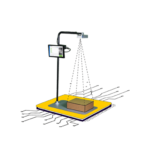How could anything possibly go wrong when products are moving and money is generated in the warehouse? However, during growing pains, a company might feel that everything moves too fast. For expanding businesses, avoiding failure by practicing until you’re perfected is a significant concern, necessitating planning for actual growth. Getting a hold and establishing roots with warehouse management processes and key performance indicators helps businesses focus on developing rather than fixing problems. Therefore, it is vital to identify the most relevant indicators to determine warehouse efficiency and productivity. Warehouse management systems that analyze critical performance criteria can assist in identifying weak areas in your process and staffing to make adjustments and modify expectations as necessary.
What do you think you’ll take away from this episode?
This episode highlights how the old-fashioned warehouse can affect productivity along with the top four methods for calculating warehouse efficiency.
Subscribe to VisAI Labs' Newsletter
Relevant links:

vMeasure S200 Automated Package Dimensioner:
Low cost and high accuracy automated package dimensioning system for third-party logistics and wholesale distributors.
Low cost and high accuracy automated package dimensioning system for third-party logistics and wholesale distributors.
Podcast Transcript:
Even if your company is raking in cash, it doesn’t imply your warehouse is running at peak efficiency.
It’s one thing to manage an inefficient warehouse, but operating an inefficient warehouse while being unaware of it is entirely another beast.
From outdated, meticulous audits to investing in the newest and best in data-tracking solutions, now is the moment to take control of your warehouse performance.
Here are a few of the most basic but effective methods to get started:







